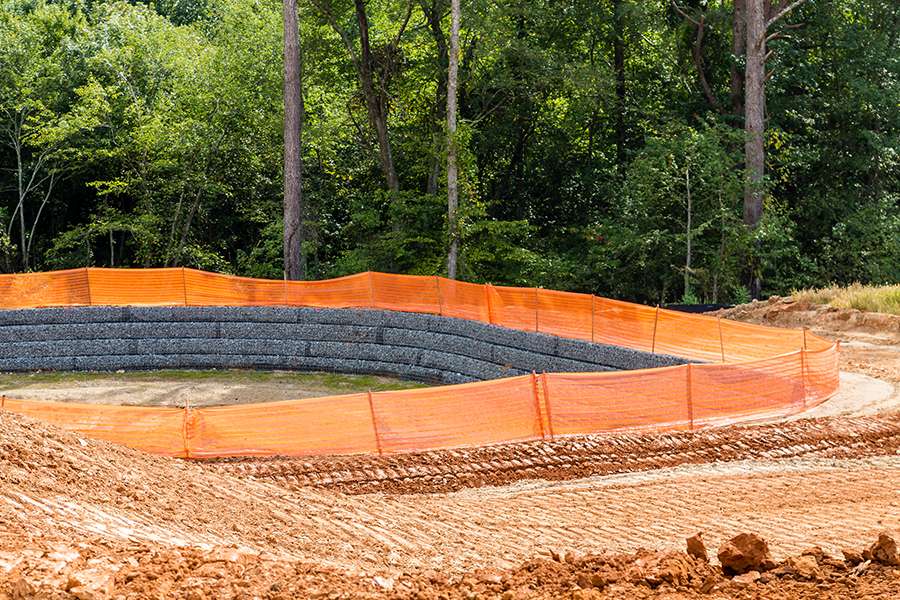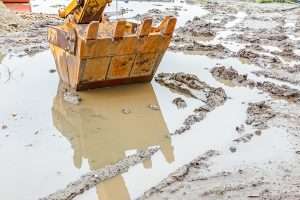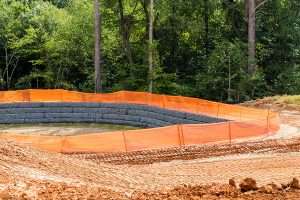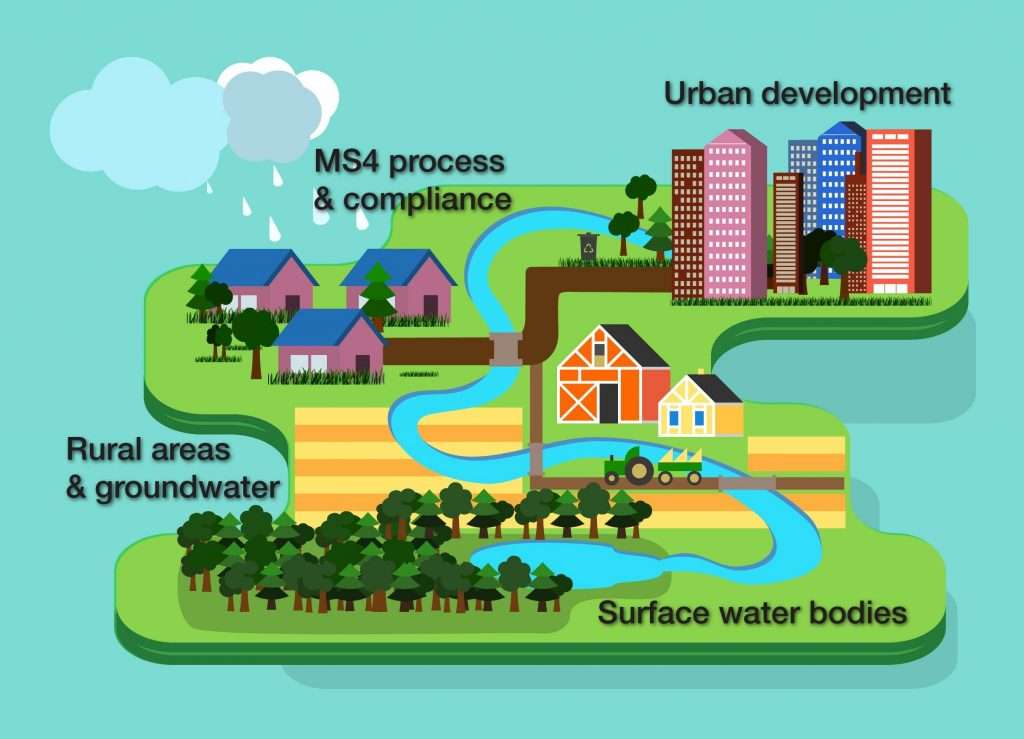
Stormwater, Ecosystems & You, Part 2: Urban Development
This is the second installment in a series of articles highlighting stormwater runoff, its effect on ecosystems and how engineering and regulations mitigate its impacts. This installment examines the various effects of urban development on stormwater flow.
As communities develop outward from their urban centers, some of the impacts are obvious – natural surfaces become impervious and tree lines are replaced with skylines of buildings. However, there are also subtle changes taking place behind the scenes, so to speak.
According to the Environmental Protection Agency (EPA), “Population growth and the development of urban/urbanized areas… can cause changes in hydrology and water quality that result in habitat modification and loss, increased flooding, decreased aquatic biological diversity, and increased sedimentation and erosion.”

Development may be exciting for a community’s growth, but it could also create unintended consequences for the surrounding landscape, including stormwater pollution and increased stormwater flow. This is why deliberate planning, thoughtful design, best management practices (BMPs) and public engagement are so important before, during and after the construction activities of urban development.
Regulations and expertise
Federal and state agencies have established formal stormwater management guidelines, such as the EPA’s National Pollutant Discharge Elimination System (NPDES) permitting program, which regulates discharge from construction and industrial activities, and municipal separate storm sewer systems (MS4s). Individual states also have various stormwater management criteria depending on the state’s characteristics, such as population size and density, for instance.
 However, in spite of all these regulations, it takes human logic to understand the project location’s geography and its long-term effects. It also takes a human touch to factor in a community’s unique features and the ability to collaborate with all of the project’s stakeholders, from regulatory agencies to public officials to private residents.
However, in spite of all these regulations, it takes human logic to understand the project location’s geography and its long-term effects. It also takes a human touch to factor in a community’s unique features and the ability to collaborate with all of the project’s stakeholders, from regulatory agencies to public officials to private residents.
Project planning and design
During project planning and design, our environmental professionals and municipal engineers work closely with the client and each other to ensure the proper standards and project requirements are simultaneously met. We also keep a close eye on evolving federal, state and local regulations and legislation. This aspect of our service is especially valuable for smaller cities and clients that lack specific expertise and resources.
By incorporating the right team members from a project’s earliest stages, we anticipate potential issues so that we design the project and draft the contract accordingly. Our proactive approach also reduces the financial impacts of unplanned additional costs, saving taxpayers money.
During construction
On a construction site where a NPDES permit is required and/or a site that is within a municipal separate storm sewer system (MS4) city, the permit holder, typically the contractor, is required to develop a construction Stormwater Pollution Prevention Plan (SWPPP) and implement BMPs during construction activities. BMPs reduce the potential impacts from stormwater flowing through the project site, where it picks up chemical pollutants from construction materials or causes erosion. Whenever land is disturbed, sediment and erosion control are common issues, which could play a significant role in the contractor’s overall operation.

A project’s proximity to a natural water body may warrant additional measures. These include the installation of temporary retention ponds, silt fence, inlet protection or diversion dikes.
Once a project is constructed and the landscape has been permanently altered, so is the stormwater flow, which could cause issues upstream or downstream that didn’t exist before. This is where environmental expertise and input, early and often during design, are imperative. A project’s may require construction of a permanent stormwater retention pond adjacent to the site, for example, to mitigate its subsequent effects. The creation of additional impervious surfaces can also increase stormwater quantity and velocity in the project area.
Bigger picture
Typically, we don’t think about stormwater in an urban setting unless our city streets are flooding. That flooding could be the result of inadequate planning and engineering or illicit residential or commercial discharge, such as the dumping of chemicals or grass clippings into a storm drain. These issues often lead to environmental and financial impacts that affect entire communities. If we educate ourselves about how it affects us, we can all contribute to preventing stormwater pollution.
Source: https://www.epa.gov/npdes/npdes-stormwater-program
See also: Stormwater, Ecosystems & You, Part 1: Overview
Stormwater, Ecosystems & You, Part 3: MS4 Compliance
Stormwater, Ecosystems & You, Part 4: Groundwater and the Rural Landscape
